 Inflation has surged worldwide as countries have come out of their COVID-19 lockdowns. The increases in prices combined with supply-chain problems has raised questions of what will happen to future prices and whether it will feed further inflation cycles.
Inflation has surged worldwide as countries have come out of their COVID-19 lockdowns. The increases in prices combined with supply-chain problems has raised questions of what will happen to future prices and whether it will feed further inflation cycles.
Inflation targeting
Inflation is a key contributor to instability in an economy. It measures the rate of increases in prices over a given period of time and indicates what will happen to the cost of living for households. Because of its importance, many central banks aim to keep inflation low and steady by setting a target. The Bank of England, the Federal Reserve, and the European Central Bank all aim to keep inflation low at a target rate of 2 per cent.
Inflation-rate targeting has been successfully practised in a growing number of countries over the past few decades. However, measures to combat rising inflation typically contract the economy through reducing real aggregate demand (or at least its rate of growth). This is a concern when the economy is not experiencing a strong economic performance.
Current outlook
 Globally, rising inflation is causing concern as a surge in demand has been confronted by supply bottlenecks and rising prices of energy and raw materials. As the world emerges from the COVID-19 lockdowns, global financial markets have been affected in recent months by concerns around inflation. They have also been affected by the prospect of major central banks around the world being forced into the early removal of pandemic support measures, such as quantitative easing, before the economic recovery from the coronavirus is complete.
Globally, rising inflation is causing concern as a surge in demand has been confronted by supply bottlenecks and rising prices of energy and raw materials. As the world emerges from the COVID-19 lockdowns, global financial markets have been affected in recent months by concerns around inflation. They have also been affected by the prospect of major central banks around the world being forced into the early removal of pandemic support measures, such as quantitative easing, before the economic recovery from the coronavirus is complete.
The Chief Economist at the Bank of England has warned that UK inflation is likely to rise ‘close to or even slightly above 5 per cent’ early next year, as he said the central bank would have a ‘live’ decision on whether to raise interest rates at its November meeting. Although consumer price inflation dipped to 3.1 per cent in September, the Bank of England has forecast it to exceed 4 per cent by the end of the year, 2 percentage points higher than its target. UK banks and building societies have already started to increase mortgage rates in response to rising inflation, signalling an end to the era of ultra-low borrowing costs and piling further pressure on household finances.
In the USA, shortages throughout the supply chains on which corporate America depends are also causing concern. These issues are translating into widespread inflationary pressure, disrupting operations and forcing companies to raise prices for customers. Pressure on every link in the supply chain, from factory closures triggered by COVID-19 outbreaks to trouble finding enough staff to unload trucks, is rippling across sectors, intensifying questions about the threat that inflation poses to robust consumer spending and rebounding corporate earnings. Reflecting concern over weaker levels of global economic growth despite rising inflationary pressures, US figures published at the end of October showed the world’s largest economy added just 194 000 jobs in September, far fewer than expected.
There are also fears raised over high levels of corporate debt, including in China at the embattled property developer Evergrande, where worries over its ability to keep up with debt payments have rippled through global markets. There are major concerns that Evergrande could pose risks to the wider property sector, with potential spill-overs internationally. However, it is argued that the British banking system has been shown in stress tests to be resilient to a severe economic downturn in China and Hong Kong.
Central bank responses
The sharpest consumer-price increases in years have evoked different responses from central banks. Many have raised interest rates, but two that haven’t are the most prominent in the global economy: the Federal Reserve and the European Central Bank. These differences in responses reflect differing opinions as to whether current price increases will feed further inflation cycles or simply peter out. For those large central banks, they are somewhat relying on households keeping faith in their track record of keeping inflation low. There is also an expectation that there are enough underutilised workers to ensure that wage inflation is kept low.
 However, other monetary authorities worry that they have not yet earned the record of keeping inflation low and are concerned about the risk of wage inflation. In addition, in poorer countries there is a larger share of spending that goes on essentials such as food and energy. These have seen some of the highest price increases, so policy makers are going to be keen to stamp down on the inflation.
However, other monetary authorities worry that they have not yet earned the record of keeping inflation low and are concerned about the risk of wage inflation. In addition, in poorer countries there is a larger share of spending that goes on essentials such as food and energy. These have seen some of the highest price increases, so policy makers are going to be keen to stamp down on the inflation.
The Federal Reserve is expected to announce that it will start phasing out its $120bn monthly bond-buying programme (quantitative easing) as it confronts more pronounced price pressures and predictions that interest rates will be lifted next year. However, no adjustments are expected to be made to the Fed’s main policy rate, which is tethered near zero. Whilst financial markets are betting on an rise in Bank Rate by the Bank of England as early as next month, spurred by comments from Governor Andrew Bailey in mid-October that the central bank would ‘have to act’ to keep a lid on inflation.
Outlook for the UK
 The Bank of England’s Chief Economist, Huw Pill, has warned that high rates of inflation could last longer than expected, due to severe supply shortages and rising household energy bills. He said inflationary pressures were still likely to prove temporary and would fall back over time as the economy adjusted after disruption caused by COVID and Brexit. However, he warned there were growing risks that elevated levels of inflation could persist next year.
The Bank of England’s Chief Economist, Huw Pill, has warned that high rates of inflation could last longer than expected, due to severe supply shortages and rising household energy bills. He said inflationary pressures were still likely to prove temporary and would fall back over time as the economy adjusted after disruption caused by COVID and Brexit. However, he warned there were growing risks that elevated levels of inflation could persist next year.
The looming rise in borrowing costs for homeowners will add further pressure to family finances already stretched by higher energy bills and surging inflation. According to the Institute for Fiscal Studies, it is expected that households will face years of stagnating living standards, with predictions showing that households would on average be paying £3000 more each year in taxes by 2024/25, with the biggest impact felt by higher earners.
Investors are also reacting to concerns and have pulled $9.4bn out of UK-focused equity funds this year after hopes that a COVID-19 vaccination drive will fuel a vigorous economic recovery were overshadowed by questions about slow growth and high inflation. It is suggested that there is a general sense of caution about the UK when it comes to investing globally, driven by monetary, fiscal and trade uncertainties.
Given all the elements contributing to this outlook, The IMF has forecast that the UK will recover more slowly from the shocks of coronavirus than other G7 nations, with economic output in 2024 still 3 per cent below its pre-pandemic levels. Financial markets are predicting the Bank of England will lift interest rates as soon as the next MPC meeting. And while supply-chain bottlenecks and rising commodity prices are a global trend, the Bank’s hawkish stance has increased the possibility of a sharper slowdown in Britain than other developed markets, some analysts have said.
What next?
Some of the major central banks are poised to take centre stage when announcing their next monetary action, as it will reveal if they share the alarm about surging inflation that has gripped investors. Markets are betting that the Bank of England will begin raising interest rates, with Bank Rate expected to rise to around 1.25 per cent by the end of next year (from the current 0.1 per cent).
It is thought that the Fed will not raise interest rates just yet but will do so in the near future. Markets, businesses, and households globally will be waiting on the monetary decisions of all countries, as these decisions will shape the trajectory of the global economy over the next few years.
Articles
- Three Days Will Reveal Global Alert Level on Inflation: Eco Week
Bloomberg, Molly Smith and Craig Stirling (31/10/21)
- Inflation watch: Global food prices hit 10-year high
Al Jazeera (4/11/21)
- Fed sings the ‘transitory’ inflation refrain, unveils bond-buying ‘taper’
ReutersHoward Schneider and Ann Saphir (3/11/21)
- BoE chief economist warns UK inflation likely to hit 5%
Financial Times, Chris Giles (21/10/21)
- Inflation pressure now ‘brutal’ because of supply squeeze, US companies say
Financial Times, Andrew Edgecliffe-Johnson, Matthew Rocco, Obey Manayiti and Claire Bushey (23/10/21)
- Rising inflation could trigger global sell-off that would harm UK, says Bank
The Guardian, Richard Partington (8/10/21)
- Bank of England chief economist warns high inflation rates may persist in 2022
The Guardian, Richard Partington (7/10/21)
- Bank of England surprises markets by holding rates at record lows
CNBC, Elliot Smith (4/11/21)
 Bank of England resists pressure to raise interest rates as inflation spike looms
Bank of England resists pressure to raise interest rates as inflation spike loomsSky News, Ed Conway (4/11/21)
Forecasts and commentary
Questions
- What is the definition of inflation?
- How is inflation measured?
- Using a diagram to aid your answers, discuss the difference between cost-push and demand-pull inflation.
- What are the demand-side and cost-side causes of the current rising inflation?
- Explain the impact an increase in interest rates has on the economy.
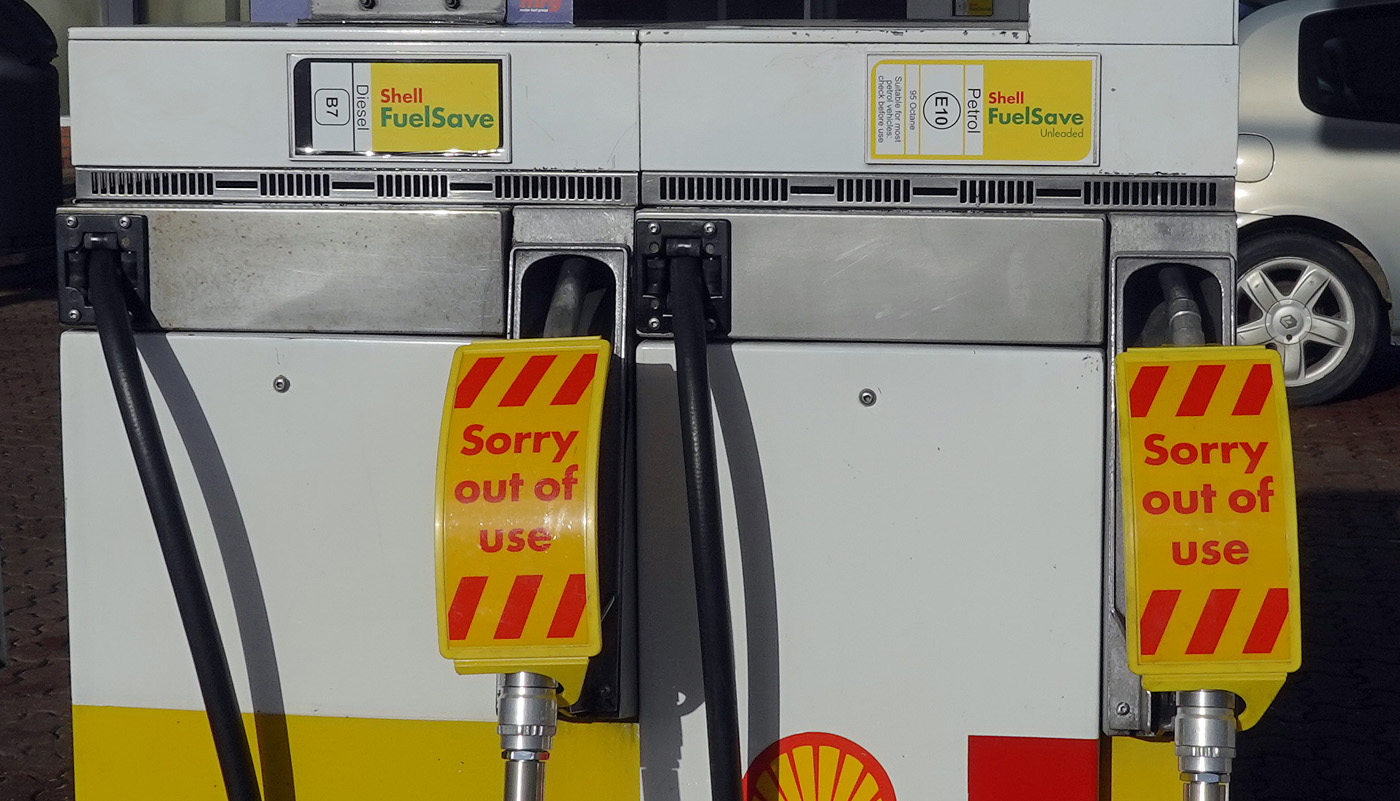 Long queues at petrol pumps, with many filling stations running out of fuel; fears of shortages of food and various other items in supermarkets; orders by shops and warehouses unfilled or delayed. These have been some of the headlines in the UK in recent days.
Long queues at petrol pumps, with many filling stations running out of fuel; fears of shortages of food and various other items in supermarkets; orders by shops and warehouses unfilled or delayed. These have been some of the headlines in the UK in recent days.
The immediate problem is a shortage of over 100 000 lorry drivers, with thousands of drivers from EU countries, who were previously living and working in the UK, having returned to their home countries. Their numbers have not been replaced by British drivers, a problem exacerbated by a decline in HGV tests during the pandemic. Thus the supply of lorry drivers has fallen.
At the same time, as the economy recovers from the COVID-19 pandemic, aggregate demand has risen and with it the demand for lorry drivers.
The shortage is pushing up wages somewhat, but not enough to eliminate the shortage. What is more, the supply of lorry drivers is relatively wage inelastic: a higher wage does not attract many more drivers into the market. Also the demand is also relatively wage inelastic: a higher wage does not do much to dampen the demand for drivers.
But why has this happened? Why has the supply of drivers fallen and why is it inelastic? And what will happen in the coming months? The three main causes are Brexit, COVID-19 and working conditions.
Brexit
 With Brexit, many EU workers left the UK, finding life and working conditions more conducive in the EU. Many EU drivers had faced discrimination and felt that they were not welcome in the UK. It has been difficult finding replacement drivers from the EU as the UK’s immigration system, which now applies to the EU as well as other countries, prioritises workers who are classified as high-skilled, and these do not include lorry drivers.
With Brexit, many EU workers left the UK, finding life and working conditions more conducive in the EU. Many EU drivers had faced discrimination and felt that they were not welcome in the UK. It has been difficult finding replacement drivers from the EU as the UK’s immigration system, which now applies to the EU as well as other countries, prioritises workers who are classified as high-skilled, and these do not include lorry drivers.
Those EU drivers who do want to stay as UK residents are finding that settled status or visas are not easy to achieve and involve filling in various documents, which can be an onerous and time-consuming process. As the writer of the first linked bog below, who is a Polish worker in the transport industry, states, ‘Would you rather come to Britain and jump through all the hoops, or choose any of the well-paying EU countries, for example, Germany that, if you live in Western Poland, is just a short drive across (virtually non-existent thanks to Schengen) border?’ Another problem is that with EU driving licences: it is harder for potential employers to check on their status and thus they may prefer to employ UK drivers. This, again, puts off EU drivers from seeking to stay in the UK.
Even in the case of EU drivers living in the EU but delivering to the UK there are problems. First there are the dangers for drivers of boarding ferries in France, where people from migrant camps seek to board lorries to get passage to the UK, often threatening drivers. If illegal migrants do succeed in boarding a trailer unseen by the driver, the driver can then be arrested in the UK. According to the Polish blogger, it’s ‘no surprise that I hear more and more drivers who, when taking on new jobs, demand guarantees from their employers that they won’t be sent to the UK’.
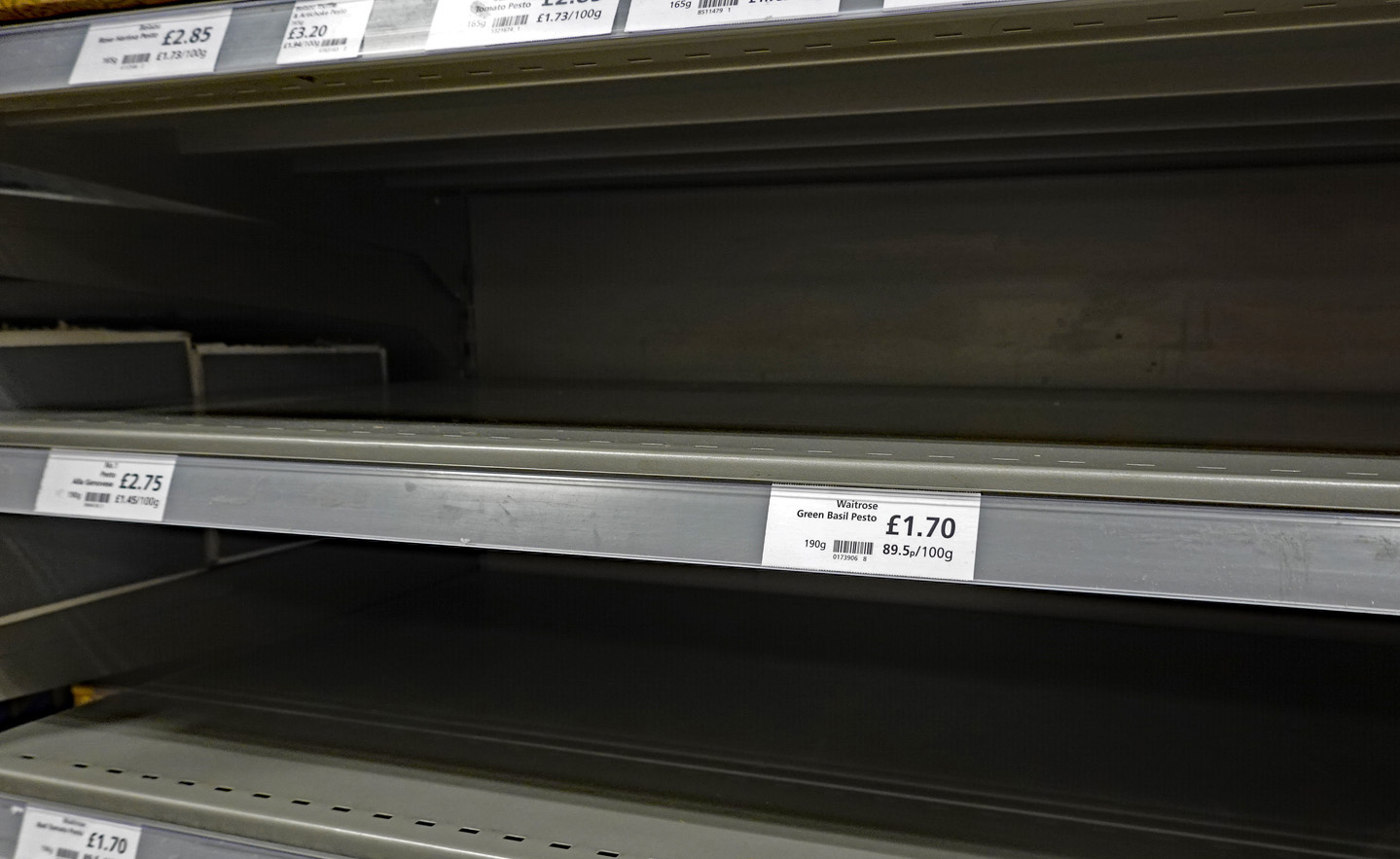 Then there is a decline in the system known as ‘cabotage’. This is where an EU driver delivers from the EU to destination A in the UK and takes back a load to the EU from destination B in the UK. To avoid having to travel empty between the two UK destinations, the driver could pick up a load to take from A to B. With a fall in imports and exports from and to the EU following Brexit, there are fewer EU lorries on UK roads. This means that there is now less capacity for transporting loads within the UK.
Then there is a decline in the system known as ‘cabotage’. This is where an EU driver delivers from the EU to destination A in the UK and takes back a load to the EU from destination B in the UK. To avoid having to travel empty between the two UK destinations, the driver could pick up a load to take from A to B. With a fall in imports and exports from and to the EU following Brexit, there are fewer EU lorries on UK roads. This means that there is now less capacity for transporting loads within the UK.
There has also been a large rise in ‘red tape’ associated with post-Brexit customs checks and border controls. This means that lorries can be held up at ports. This makes it much less attractive for EU haulage companies to export to the UK rather than to other EU countries, where paperwork is minimal. In addition, m many drivers are paid by the length of the journey rather than by the time spent, so delays result in them earning less per hour. Full checks have not been introduced yet. When they are, in January and July next year, the problem will be worse.
Tax changes make it more difficult for drivers to avoid taxes by claiming that they are self employed when they are in reality employees. This too is discouraging drivers from the EU from moving to or staying in the UK since many would now (since April 2021) be paying more tax.
COVID-19
Another contributing factor to the shortage of drivers has been COVID-19 and the government’s response to it. COVID rates are considerably higher in the UK than in most EU countries and, not surprisingly, many EU drivers are afraid to come to the UK.
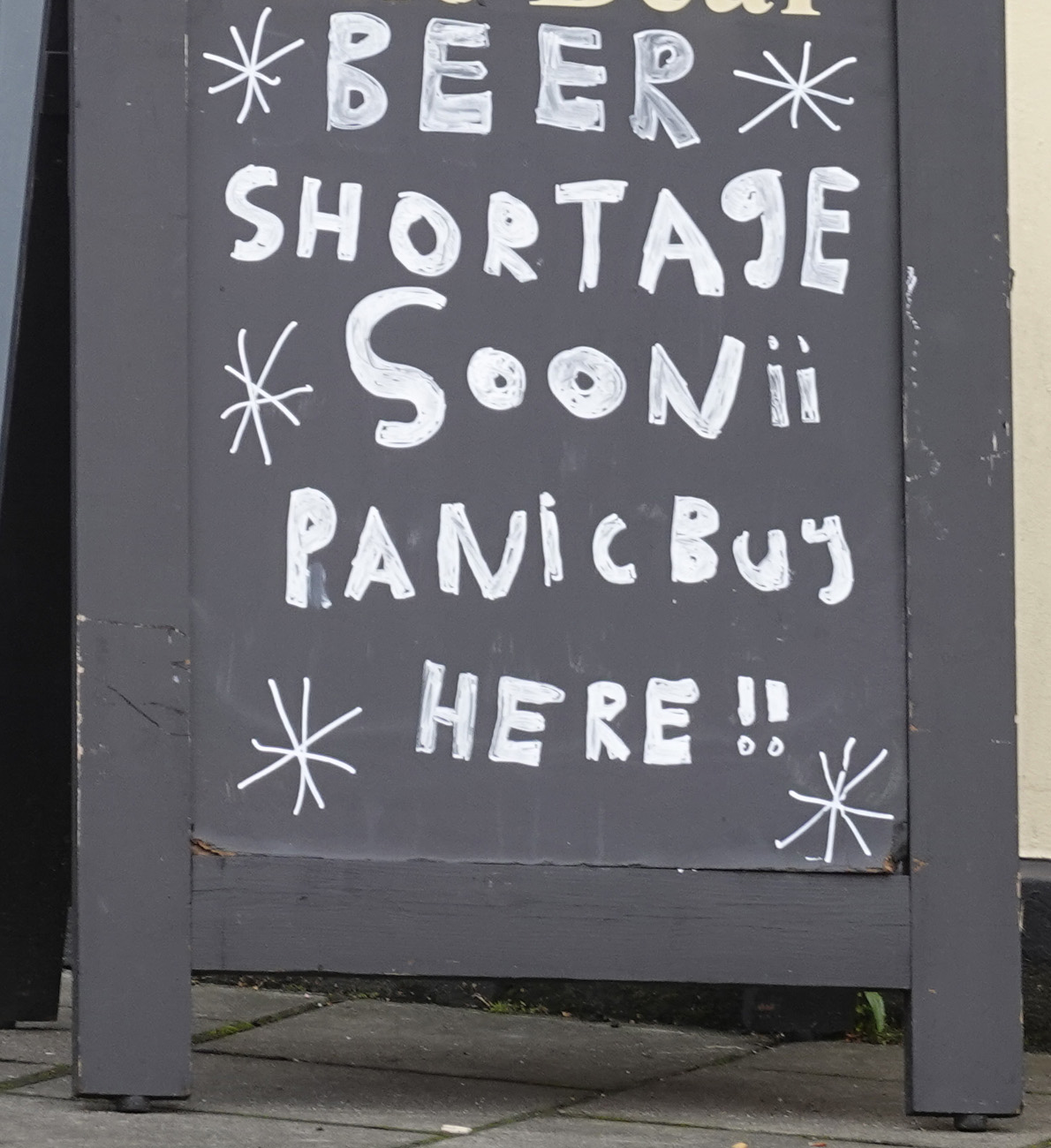 The pandemic led to fewer HGV driver tests, with 25 000 fewer candidates passing their test in 2020 than in 2019. It takes time to train new drivers and then to test them. However, even if there had been no reduction in HGV drivers passing their tests, there would still be a significant shortage of qualified drivers.
The pandemic led to fewer HGV driver tests, with 25 000 fewer candidates passing their test in 2020 than in 2019. It takes time to train new drivers and then to test them. However, even if there had been no reduction in HGV drivers passing their tests, there would still be a significant shortage of qualified drivers.
A further problem with the effects of COVID-19 on the economy has been the initial recession and then the bounce back. The sheer size of the bounce back has exacerbated the problem of driver shortages, which otherwise would have been slower to develop, giving the market more time to respond. Real GDP grew by 5.5% from 2021 Q1 to 2021 Q2, giving an annual growth rate of 23.6%. Nevertheless, GDP was still some 3.3% below its 2019 Q3 level.
Pay and working conditions
Working conditions are very poor for many drivers. The following are common complaints:
 Driving jobs are often very tightly controlled, with computer monitoring and little freedom for the driver. Some cabs have cameras aimed at the drivers so that they can be constantly monitored.
Driving jobs are often very tightly controlled, with computer monitoring and little freedom for the driver. Some cabs have cameras aimed at the drivers so that they can be constantly monitored.- Drivers are subject to very stringent health and safety regulations, such as not being allowed to drive longer than a certain time, even when they are queuing in congested traffic. Whilst many of these regulations are desirable to protect both the public’s and the driver’s safety, they can discourage drivers from entering or staying in the industry. And some regulations are hard to justify on safety grounds (see second linked article below, point 13).
- Just-in-time deliveries at supermarkets, regional distribution centres (warehouses) or factories make timing very important and add considerable stress to drivers who may face abuse if they are late, even though it was not their fault, with their employer perhaps facing a fine. And yet on other occasions they might have to wait a long time to offload if drivers before them have been delayed, and often the conditions in waiting areas are poor with few if any facilities.
- Drivers often feel a lack of respect from employers, trainers and the general public.
 Rest and refreshment facilities are often very poor in the UK and generally much worse than in the EU. In the EU, motorway service areas have better parking, toilets, showers and shops. Restaurants are better and cheaper. Dedicated truck stops have supermarkets, laundrettes, showers or even open-air gyms dedicated to making drivers’ lives easier and more pleasant. The UK by contrast often has very poor facilities. Unlike in most EU motorway services, drivers have to pay to park and are faced with poor toilet and eating facilities. ‘Meanwhile, a typical British truck stop is some dusty yard full of potholes on the side of some industrial estate with a portaloo and a “greasy spoon” burger van parked next to it.’
Rest and refreshment facilities are often very poor in the UK and generally much worse than in the EU. In the EU, motorway service areas have better parking, toilets, showers and shops. Restaurants are better and cheaper. Dedicated truck stops have supermarkets, laundrettes, showers or even open-air gyms dedicated to making drivers’ lives easier and more pleasant. The UK by contrast often has very poor facilities. Unlike in most EU motorway services, drivers have to pay to park and are faced with poor toilet and eating facilities. ‘Meanwhile, a typical British truck stop is some dusty yard full of potholes on the side of some industrial estate with a portaloo and a “greasy spoon” burger van parked next to it.’- Hours are long. Even though driving hours are restricted to 10 hours per day (recently extended to 11 hours), the average working day may be much longer as drivers have to wait at distribution centres, fill in increasing amounts of paperwork and help load or unload their vehicle. Also drivers may have to work variable shifts, which leads to disturbed sleeping patterns.
 The work is often physically demanding, especially when a large part of the job involves loading and unloading and moving items from the lorry to where the customer wants them.
The work is often physically demanding, especially when a large part of the job involves loading and unloading and moving items from the lorry to where the customer wants them.- Many vehicles are hard and unpleasant to drive, with leased vehicles often low-spec, dirty, uncomfortable and poorly maintained.
- Many of the jobs are agency jobs that do not offer stable employment.
Although pay is higher than in some parts of the labour market where there are shortages, such as social care and hospitality, pay per hour is still relatively poor when compared with many industries which have better conditions of employment.
The future
 The government is allowing more foreign workers into the UK from this month (October); more training places will be offered for potential drivers and the number of driving tests will increase; the government is also encouraging retired drivers or those who have left driving for other jobs to return to the industry.
The government is allowing more foreign workers into the UK from this month (October); more training places will be offered for potential drivers and the number of driving tests will increase; the government is also encouraging retired drivers or those who have left driving for other jobs to return to the industry.
However, there are shortages of drivers in other EU countries and so it will be difficult to attract additional drivers to the UK from the EU. What is more, with wages and working conditions remaining poor and the labour market remaining tight in other sectors, it might be hard to fill new training places and encourage workers to return to driving. Also, with the average age of drivers being 55, it is likely that the outflow of workers from driving jobs could be large in the coming years.
Articles
- Twenty reasons why there is an HGV driver shortage – part one: 1-10
West Country Bylines, Tomasz Oryński (21/9/21)
- Twenty reasons why there is an HGV driver shortage – part 2: reasons 11-20
West Country Bylines, Tomasz Oryński (23/9/21)
- Gas Shortages Awaken Britain to Some Crucial Workers: Truck Drivers
New York Times, Eshe Nelson and Megan Specia (29/9/21)
- Time running out to save UK industry from worker shortages, say business leaders
CNN, Walé Azeez (1/10/21)
- Boris Johnson’s Brexit choices are making Britain’s fuel and food shortages worse
CNN, Hanna Ziady (29/9/21)
- How serious is the shortage of lorry drivers?
BBC News, Reality Check Team (28/9/21)
- Petrol shortage: Is the fuel crisis improving?
BBC News (1/10/21)
- UK visa plan will not fix lorry driver shortage, says boss
BBC News (28/9/21)
- The empty shelves crisis isn’t just down to Covid and Brexit – it’s been decades in the making
The Guardian, Felicity Lawrence (17/9/21)
- Emergency visa scheme extended in major U-turn by Boris Johnson
The Guardian, Rajeev Syal (1/10/21)
- Truck driver shortage won’t be solved by quick fix visas – here are three ways forward
The Conversation, Temidayo Akenroye (27/9/21)
- UK lorry driver shortage a stark example of a wider European problem
Euronews, Luke Hurst and Shona Murray (29/9/21)
- Emergency visas won’t tempt European lorry drivers to UK, say haulage chiefs
The Observer, Jon Henley, Michael Savage and James Tapper (25/9/21)
- Labour shortage threatens to cancel out any Brexit dividend
British Meat Processors Association, Industry News, Peter Hardwick (28/9/21)
- How to control a consumer panic
BBC News. Faisal Islam (28/9/21)
Questions
- Why are the supply of and demand for lorry drivers relatively wage inelastic?
- Use a marginal productivity diagram to explain the current situation in the market for lorry drivers.
- What policy measures could be adopted to increase the supply of lorry drivers? How successful would these be?
- Is it ‘rational’ for consumers to ‘panic buy’ fuel and other products in short supply?
- Find out why there is a shortage of lorry drivers in the EU. Are any of the explanations similar to those in the UK?
- What are the macroeconomic implications of a shortage of lorry drivers and other key workers?
 On 10 March, the House of Representatives gave final approval to President Biden’s $1.9tr fiscal stimulus plan (the American Rescue Plan). Worth over 9% of GDP, this represents the third stage of an unparalleled boost to the US economy. In March 2020, President Trump secured congressional agreement for a $2.2tr package (the CARES Act). Then in December 2020, a bipartisan COVID relief bill, worth $902bn, was passed by Congress.
On 10 March, the House of Representatives gave final approval to President Biden’s $1.9tr fiscal stimulus plan (the American Rescue Plan). Worth over 9% of GDP, this represents the third stage of an unparalleled boost to the US economy. In March 2020, President Trump secured congressional agreement for a $2.2tr package (the CARES Act). Then in December 2020, a bipartisan COVID relief bill, worth $902bn, was passed by Congress.
By comparison, the Obama package in 2009 in response to the impending recession following the financial crisis was $831bn (5.7% of GDP).
The American Rescue Plan
The Biden stimulus programme consists of a range of measures, the majority of which provide monetary support to individuals. These include a payment of $1400 per person for single people earning less than $75 000 and couples less than $150 000. These come on top of payments of $1200 in March 2020 and $600 in late December. In addition, the top-up to unemployment benefits of $300 per week agreed in December will now continue until September. Also, annual child tax credit will rise from $2000 annually to as much as $3600 and this benefit will be available in advance.
 Other measures include $350bn in grants for local governments depending on their levels of unemployment and other needs; $50bn to improve COVID testing centres and $20bn to develop a national vaccination campaign; $170bn to schools and universities to help them reopen after lockdown; and grants to small businesses and specific grants to hard-hit sectors, such as hospitality, airlines, airports and rail companies.
Other measures include $350bn in grants for local governments depending on their levels of unemployment and other needs; $50bn to improve COVID testing centres and $20bn to develop a national vaccination campaign; $170bn to schools and universities to help them reopen after lockdown; and grants to small businesses and specific grants to hard-hit sectors, such as hospitality, airlines, airports and rail companies.
Despite supporting the two earlier packages, no Republican representative or senator backed this latest package, arguing that it was not sufficiently focused. As a result, reaction to the package has been very much along partisan lines. Nevertheless, it is supported by some 90% of Democrat voters and 50% of Republican voters.
Is the stimulus the right amount?
Although the latest package is worth $1.9tr, aggregate demand will not expand by this amount, which will limit the size of the multiplier effect. The reason is that the benefits multiplier is less than the government expenditure multiplier as some of the extra money people receive will be saved or used to reduce debts.
With $3tr representing some 9% of GDP, this should easily fill the estimated negative output gap of between 2% and 3%, especially when multiplier effects are included. Also, with savings having increased during the recession to put them some 7% above normal, the additional amount saved may be quite small, and wealthier Americans may begin to reduce their savings and spend a larger proportion of their income.
 So the problem might be one of excessive stimulus, which in normal times could result in crowding out by driving up interest rates and dampening investment. However, the Fed is still engaged in a programme of quantitative easing. Between mid-March 2020 and the end of March 2021, the Fed’s portfolio of securities held outright grew from $3.9tr to $7.2tr. What is more, many economists predict that inflation is unlikely to rise other than very slightly. If this is so, it should allow the package to be financed easily. Debt should not rise to unsustainable levels.
So the problem might be one of excessive stimulus, which in normal times could result in crowding out by driving up interest rates and dampening investment. However, the Fed is still engaged in a programme of quantitative easing. Between mid-March 2020 and the end of March 2021, the Fed’s portfolio of securities held outright grew from $3.9tr to $7.2tr. What is more, many economists predict that inflation is unlikely to rise other than very slightly. If this is so, it should allow the package to be financed easily. Debt should not rise to unsustainable levels.
Other economists argue, however, that inflationary expectations are rising, reflected in bond yields, and this could drive actual inflation and force the Fed into the awkward dilemma of either raising interest rates, which could have a significant dampening effect, or further increasing money supply, potentially leading to greater inflationary problems in the future.
A lot will depend what happens to potential GDP. Will it rise over the medium term so that additional spending can be accommodated? If the rise in spending encourages an increase in investment, this should increase potential GDP. This will depend on business confidence, which may be boosted by the package or may be dampened by worries about inflation.
Additional packages to come
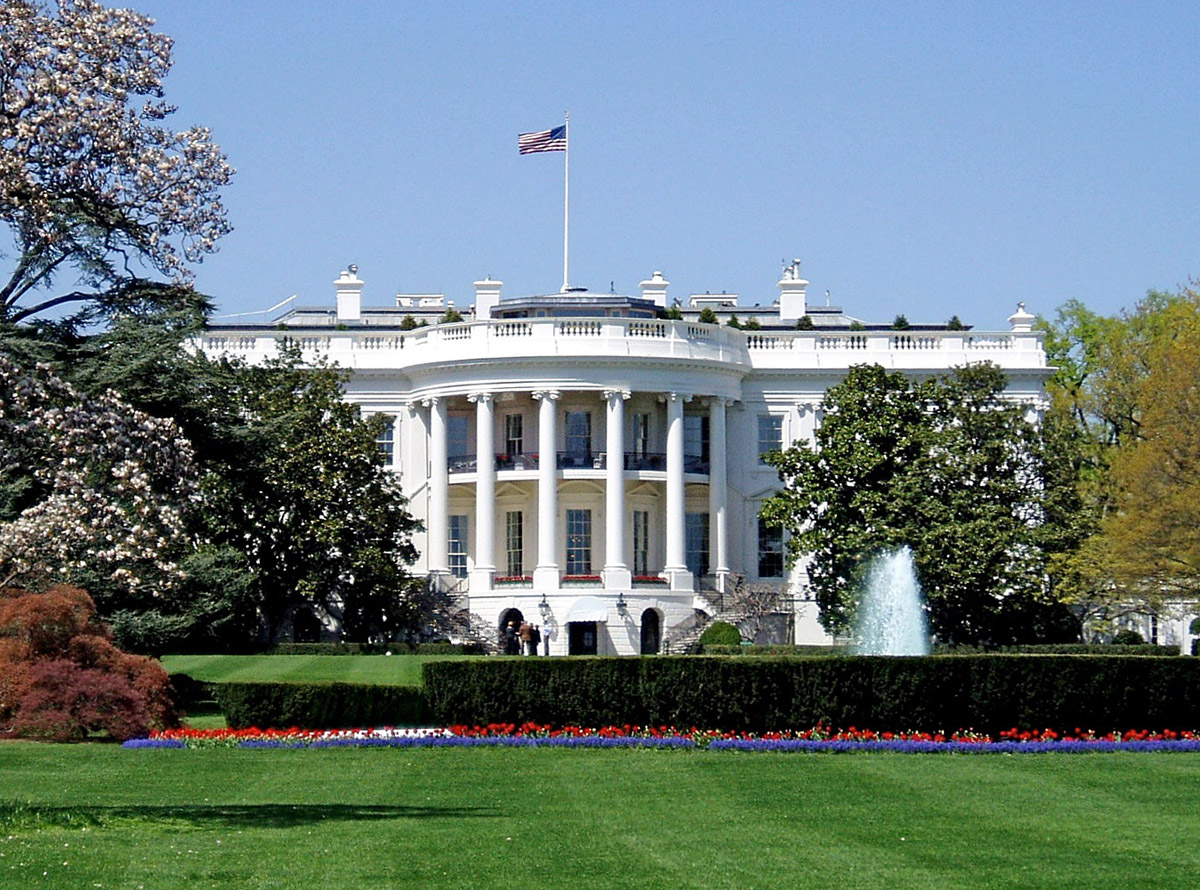 Potential GDP should also be boosted by two further packages that Biden plans to put to Congress.
Potential GDP should also be boosted by two further packages that Biden plans to put to Congress.
The first is a $2.2tr infrastructure investment plan, known as the American Jobs Plan. This is a 10-year plan to invest public money in transport infrastructure (such as rebuilding 20 000 miles of road and repairing bridges), public transport, electric vehicles, green housing, schools, water supply, green power generation, modernising the power grid, broadband, R&D in fields such as AI, social care, job training and manufacturing. This will be largely funded through tax increases, such as gradually raising corporation tax from 21% to 28% (it had been cut from 35% to 21% by President Trump) and taxing global profits of US multinationals. However, the spending will generally precede the increased revenues and thus will raise aggregate demand in the initial years. Only after 15 years are revenues expected to exceed costs.
The second is a yet-to-be announced plan to increase spending on childcare, healthcare and education. This should be worth at least $1tr. This will probably be funded by tax increases on income, capital gains and property, aimed largely at wealthy individuals. Again, it is hoped that this will boost potential GDP, in this case by increasing labour productivity.
With earlier packages, the total increase in public spending will be over $8tr. This is discretionary fiscal policy writ large.
Articles
- Biden’s $1.9 trillion COVID-19 bill wins final approval in House
Reuters, Susan Cornwell and Makini Brice (10/3/21)
- Biden’s Covid stimulus plan: It costs $1.9tn but what’s in it?
BBC News, Natalie Sherman (6/3/21)
- Biden’s $1.9 Trillion Challenge: End the Coronavirus Crisis Faster
New York Times, Jim Tankersley and Sheryl Gay Stolberg (22/3/21)
- Joe Biden writes a cheque for America – and the rest of the world
The Observer, Phillip Inman (13/3/21)
- Spend or save: Will Biden’s stimulus cheques boost the economy?
Aljazeera, Cinnamon Janzer (9/3/21)
- After Biden stimulus, US economic growth could rival China’s for the first time in decades
CNN, Matt Egan (12/3/21)
- Larry Summers, who called out inflation fears with Biden’s $1.9 trillion COVID-19 relief package, says the US is seeing ‘least responsible’ macroeconomic policy in 40 years
Business Insider, John L. Dorman (21/3/21)
- With $1.9 Trillion in New Spending, America Is Headed for Financial Fragility
Barron’s, Leslie Lipschitz and Josh Felman (30/3/21)
- Biden unveils ‘once-in-a generation’ $2tn infrastructure investment plan
The Guardian, Lauren Gambino (31/3/21)
- Biden unveils $2tn infrastructure plan and big corporate tax rise
Financial Times, James Politi (31/3/21)
- The Observer view on Joe Biden’s audacious spending plans
The Observer, editorial (11/4/21)
Videos
Questions
- Draw a Keynesian cross diagram to show the effect of an increase in benefits when the economy is operating below potential GDP.
- What determines the size of the benefits multiplier?
- Explain what is meant by the output gap. How might the pandemic and accompanying emergency health measures have affected the size of the output gap?
- How are expectations relevant to the effectiveness of the stimulus measures?
- What is likely to determine the proportion of the $1400 stimulus cheques that people spend?
- Distinguish between resource crowding out and financial crowding out. Is the fiscal stimulus package likely to result in either form of crowding out and, if so, what will determine by how much?
- What is the current monetary policy of the Fed? How is it likely to impact on the effectiveness of the fiscal stimulus?
 At its meeting on 6 May, the Bank of England’s Monetary Policy Committee decided to keep Bank Rate at 0.1%. Due to the significant impact of COVID-19 and the measures put in place to try to contain the virus, the MPC voted unanimously to keep Bank Rate the same.
At its meeting on 6 May, the Bank of England’s Monetary Policy Committee decided to keep Bank Rate at 0.1%. Due to the significant impact of COVID-19 and the measures put in place to try to contain the virus, the MPC voted unanimously to keep Bank Rate the same.
However, it decided not to launch a new stimulus programme, with the committee voting by a majority of 7-2 for the Bank to continue with the current programme of quantitative easing. This involves the purchase of £200 billion of government and sterling non-financial investment-grade corporate bonds, bringing the total stock of bonds held by the Bank to £645 billion.
The Bank forecast that the crisis will put the economy into its deepest recession in 300 years, with output plunging 30 per cent in the first half of the year.
Monetary policy and MPC
Monetary policy is the tool used by the UK’s central bank to influence how much money is in the economy and how much it costs to borrow. The Bank of England’s main monetary policy tools include setting the Bank Rate and quantitative easing (QE). Bank Rate is the interest rate charged to banks when they borrow money from the BoE. QE is the process of creating money digitally to buy corporate and government bonds.
The BoE’s Monetary Policy Committee (MPC) sets monetary policy to meet the 2% inflation target. Maintaining a low and stable inflation rate is good for the economy and it is the main monetary policy aim. However, the Bank also has to balance this target with the government’s other economic aims of sustaining growth and employment in the economy.
Actions taken by the MPC
It is challenging to respond to severe economic and financial disruption, with the UK economy looking unusually uncertain. Activity has fallen sharply since the beginning of the year and unemployment has risen markedly. The current rate of inflation, measured by the Consumer Price Index (CPI), declined to 1.5% in March and is likely to fall below 1% in the next few months. Household consumption has fallen by around 30% as consumer confidence has declined. Companies’ sales are expected to be around 45% lower than normal and business investment 50% lower.
In the current circumstances, and consistent with the MPC’s remit, monetary policy is aimed at supporting businesses and households through the crisis and limiting any lasting damage to the economy. The Bank has used both main monetary tools to fulfil its mandate and attempt to boost the economy amid the current lockdown. The Bank Rate was reduced to 0.1% in March, the lowest level in the Bank’s 325-year history and the current programme of QE was introduced in March.
What is next?
This extraordinary time has seen the outlook for the all global economies become uncertain. 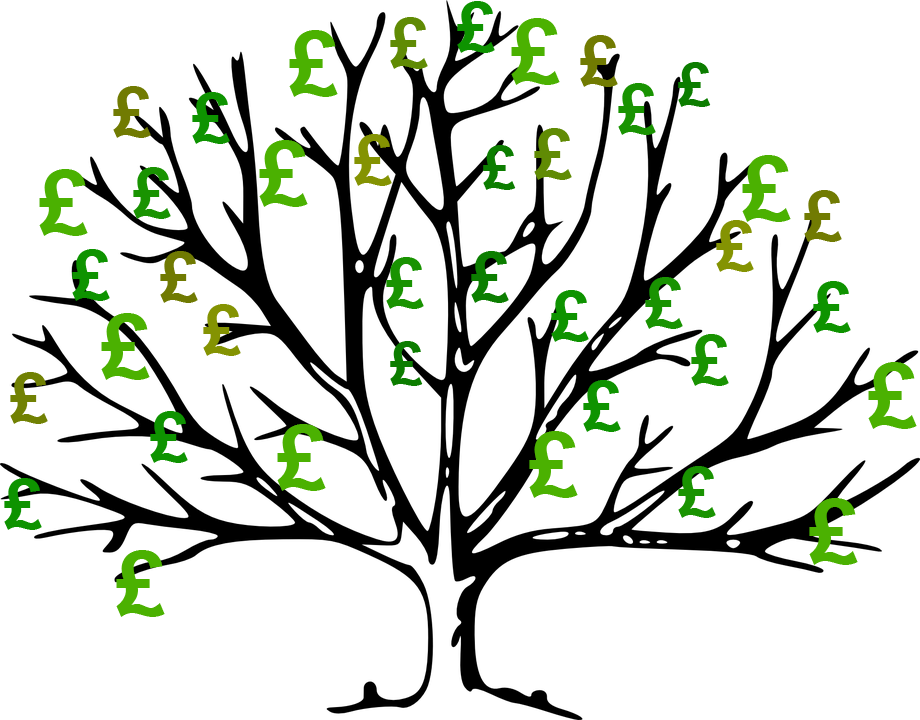 The long-term outcome will depend critically on the evolution of the pandemic, and how governments, households and businesses respond to it. The Bank of England has stated that businesses and households will need to borrow to get through this period and is encouraging banks and building societies to increase their lending. Britain’s banks are warned that if they try to stem losses by restricting lending, they will make the situation worse. The Bank believes that the banks are strong enough to keep lending, which will support the economy and limit losses to themselves.
The long-term outcome will depend critically on the evolution of the pandemic, and how governments, households and businesses respond to it. The Bank of England has stated that businesses and households will need to borrow to get through this period and is encouraging banks and building societies to increase their lending. Britain’s banks are warned that if they try to stem losses by restricting lending, they will make the situation worse. The Bank believes that the banks are strong enough to keep lending, which will support the economy and limit losses to themselves.
In the short term, a bleak picture of the UK economy is suggested, with a halving in business investment, a near halving in business sales, a sharp rise in unemployment and households cutting their spending by a third. Despite its forecast that GDP could shrink by 14% for 2020, the Bank of England is forecasting a ‘V’ shaped recovery. In this scenario, the recovery in economic activity, once measures are softened, is predicted to be relatively rapid and inflation rises to around the 2 per cent target. However, this would be after a dip to 0.5% in 2021, before returning to the 2 per cent target the following year.
However, there are some suggestions that the Bank’s forecast for the long-term recovery is too optimistic. Yael Selfin, chief economist at KPMG UK, fears the UK economy could shrink even more sharply than the Bank of England has forecast.
Despite the stark numbers issued by the Bank of England today, additional pressure on the economy is likely. Some social distancing measures are likely to remain in place until we have a vaccine or an effective treatment for the virus, with people also remaining reluctant to socialise and spend. That means recovery is unlikely to start in earnest before sometime next year.
 There are also additional factors that could dampen future productivity, such as the impact on supply chains, with ‘just-in-time’ operations potentially being a thing of the past.
There are also additional factors that could dampen future productivity, such as the impact on supply chains, with ‘just-in-time’ operations potentially being a thing of the past.
There is also the ongoing issue of Brexit. This is a significant downside risk as the probability of a smooth transition to a comprehensive free-trade agreement with the EU in January is relatively small. This will only increase uncertainty for businesses along with the prospect of increased trade frictions next year.
Conclusion
The predictions from the Bank of England are based on many assumptions, one of which is that the economy will only be gradually released from lockdown. Its numbers contain the expectations that consumer and worker behaviour will change significantly, and continue for some time, with forms of voluntary social distancing. On the other hand, Mr Bailey expects the recovery to be much faster than seen with the financial crisis a decade ago. However, again this is based on the assumption that measures put in place from the public health side prevent a second wave of the virus.
It also assumes that the supply-side effects on the economy will be limited in the long run. Many economists disagree, arguing that the ‘scarring effects’ of the lockdown may be substantial. These include lower rates of investment, innovation and start ups and the deskilling effects on labour. They also include the businesses that have gone bankrupt and the dampening effect on consumer and business confidence. Finally, with a large increase in lending to tide firms over the crisis, many will face problems of debt, which will dampen investment.
The Bank of England does recognise these possible scarring effects. Specifically, it warns of the danger of a rise in equilibrium unemployment:
It is possible that the rise in unemployment could prove more persistent than embodied in the scenario, for example if companies are reluctant to hire until they are sure about the robustness of the recovery in demand. It is also possible that any rise in unemployment could lead to an increase in the long‑term equilibrium rate of unemployment. That might happen if the skills of the unemployed do not increase to the same extent as they would if they were working, for example, or even erode over time.
What is certain, however, is that the long-term picture will only become clearer when we start to come out of the crisis. Bailey implied that the Bank is taking a wait-and-see approach for now, waiting on the UK government to shed some light about easing of lockdown measures before taking any further action with regards to QE. The MPC will continue to monitor the situation closely and, consistent with its remit, stands ready to take further action as necessary to support the economy and ensure a sustained return of inflation to the 2% target. Paul Dales, chief UK economist at Capital Economics, suggested that the central bank is signalling that ‘more QE is coming, if not in June, then in August’.
Articles
Bank of England publication
Questions
- How could the BoE use monetary policy to boost the economy?
- Explain how changes in interest rates affect aggregate demand.
- Define and explain quantitative easing (QE).
- How might QE help to stimulate economic growth?
- How is the pursuit of QE likely to affect the price of government bonds? Explain.
- Evaluate the extent to which monetary policy is able to stimulate the economy and achieve price stability.
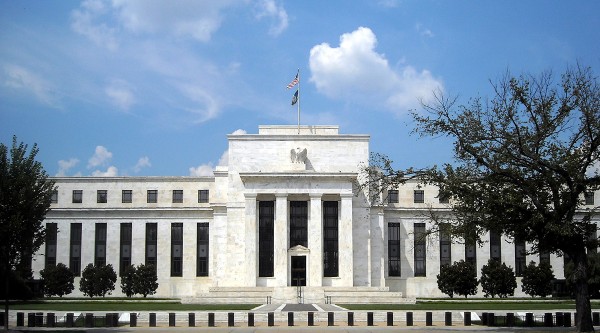 Donald Trump has suggested that the Fed should cut interest rates by 1 percentage point and engage in a further round of quantitative easing. He wants to see monetary policy used to give a substantial boost to US economic growth at a time when inflation is below target. In a pair of tweets just before the meeting of the Fed to decide on interest rates, he said:
Donald Trump has suggested that the Fed should cut interest rates by 1 percentage point and engage in a further round of quantitative easing. He wants to see monetary policy used to give a substantial boost to US economic growth at a time when inflation is below target. In a pair of tweets just before the meeting of the Fed to decide on interest rates, he said:
China is adding great stimulus to its economy while at the same time keeping interest rates low. Our Federal Reserve has incessantly lifted interest rates, even though inflation is very low, and instituted a very big dose of quantitative tightening. We have the potential to go up like a rocket if we did some lowering of rates, like one point, and some quantitative easing. Yes, we are doing very well at 3.2% GDP, but with our wonderfully low inflation, we could be setting major records &, at the same time, make our National Debt start to look small!
But would this be an appropriate policy? The first issue concerns the independence of the Fed.
It is supposed to take decisions removed from the political arena. This means sticking to its inflation target of 2 per cent over the medium term – the target it has officially had since January 2012. To do this, it adjusts the federal funds interest rate and the magnitude of any bond buying programme (quantitative easing) or bond selling programme (quantitative tightening).
The Fed is supposed to assess the evidence concerning the pressures on inflation (e.g. changes in aggregate demand) and what inflation is likely to be over the medium term in the absence of any changes in monetary policy. If the Federal Open Market Committee (FOMC) expects inflation to exceed 2 per cent over the medium term, it will probably raise the federal funds rate; if it expects inflation to be below the target it will probably lower the federal funds rate.
In the case of the economy being in recession, and thus probably considerably undershooting the target, it may also engage in quantitative easing (QE). If the economy is growing strongly, it may sell some of its portfolio of bonds and thus engage in quantitative tightening (QT).
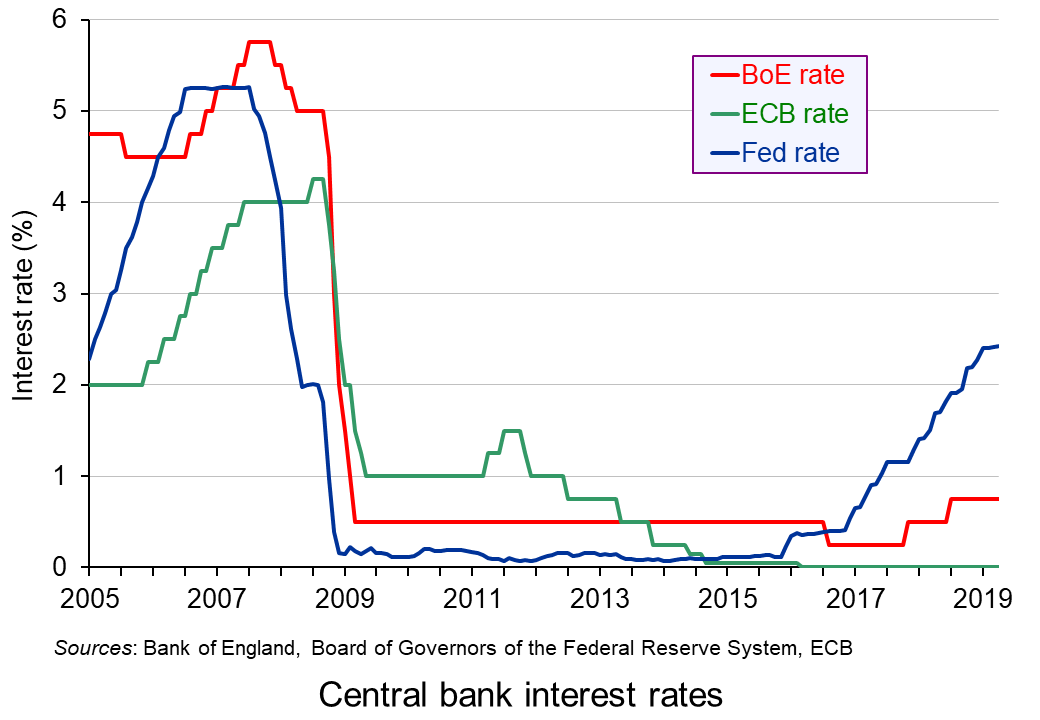 Since December 2015 the Fed has been raising interest rates by 0.25 percentage points at a time in a series of steps, so that the federal funds rate stands at between 2.25% and 2.5% (see chart). And since October 2017, it has also been engaged in quantitative tightening. In recent months it has been selling up to $50 billion of assets per month from its holdings of around $4000 billion and so far has reduced them by around £500 billion. It has, however, announced that the programme of QT will end in the second half of 2019.
Since December 2015 the Fed has been raising interest rates by 0.25 percentage points at a time in a series of steps, so that the federal funds rate stands at between 2.25% and 2.5% (see chart). And since October 2017, it has also been engaged in quantitative tightening. In recent months it has been selling up to $50 billion of assets per month from its holdings of around $4000 billion and so far has reduced them by around £500 billion. It has, however, announced that the programme of QT will end in the second half of 2019.
This does raise the question of whether the FOMC is succumbing to political pressure to cease QT and put interest rate rises on hold. If so, it is going against its remit to base its policy purely on evidence. The Fed, however, maintains that its caution reflects uncertainty about the global economy.
 The second issue is whether Trump’s proposed policy is a wise one.
The second issue is whether Trump’s proposed policy is a wise one.
Caution about further rises in interest rates and further QT is very different from the strongly expansionary monetary policy that President Trump proposes. The economy is already growing at 3.2%, which is above the rate of growth in potential output, of around 1.8% to 2.0%. The output gap (the percentage amount that actual GDP exceeds potential GDP) is positive. The IMF forecasts that the gap will be 1.4% in 2019 and 1.3% in 2020 and 2021. This means that the economy is operating at above normal capacity working and this will eventually start to drive up inflation. Any further stimulus will exacerbate the problem of excess demand. And a large stimulus, as proposed by Donald Trump, will cause serious overheating in the medium term, even if it does stimulate growth in the short term.
 For these reasons, the Fed resisted calls for a large cut in interest rates and a return to quantitative easing. Instead it chose to keep interest rates on hold at its meeting on 1 May 2019.
For these reasons, the Fed resisted calls for a large cut in interest rates and a return to quantitative easing. Instead it chose to keep interest rates on hold at its meeting on 1 May 2019.
But if the Fed had done as Donald Trump would have liked, the economy would probably be growing very strongly at the time of the next US election in November next year. It would be a good example of the start of a political business cycle – something that is rarer nowadays with the independence of central banks.
Articles
FOMC meeting
Questions
- What are the arguments for central bank independence?
- Are there any arguments against central bank independence?
- Explain what is meant by an ‘output gap’? Why is it important to be clear on what is meant by ‘potential output’?
- Would there be any supply-side effects of a strong monetary stimulus to the US economy at the current time? If so, what are they?
- Explain what is meant by the ‘political business’ cycle? Are governments in the UK, USA or the eurozone using macroeconomic policy to take advantage of the electoral cycle?
- The Fed seems to be ending its programme of quantitative tightening (QT). Why might that be so and is it a good idea?
- If inflation is caused by cost-push pressures, should central banks stick rigidly to inflation targets? Explain.
- How are expectations likely to affect the success of a monetary stimulus?
 Inflation has surged worldwide as countries have come out of their COVID-19 lockdowns. The increases in prices combined with supply-chain problems has raised questions of what will happen to future prices and whether it will feed further inflation cycles.
Inflation has surged worldwide as countries have come out of their COVID-19 lockdowns. The increases in prices combined with supply-chain problems has raised questions of what will happen to future prices and whether it will feed further inflation cycles. Globally, rising inflation is causing concern as a surge in demand has been confronted by supply bottlenecks and rising prices of energy and raw materials. As the world emerges from the COVID-19 lockdowns, global financial markets have been affected in recent months by concerns around inflation. They have also been affected by the prospect of major central banks around the world being forced into the early removal of pandemic support measures, such as quantitative easing, before the economic recovery from the coronavirus is complete.
Globally, rising inflation is causing concern as a surge in demand has been confronted by supply bottlenecks and rising prices of energy and raw materials. As the world emerges from the COVID-19 lockdowns, global financial markets have been affected in recent months by concerns around inflation. They have also been affected by the prospect of major central banks around the world being forced into the early removal of pandemic support measures, such as quantitative easing, before the economic recovery from the coronavirus is complete. However, other monetary authorities worry that they have not yet earned the record of keeping inflation low and are concerned about the risk of wage inflation. In addition, in poorer countries there is a larger share of spending that goes on essentials such as food and energy. These have seen some of the highest price increases, so policy makers are going to be keen to stamp down on the inflation.
However, other monetary authorities worry that they have not yet earned the record of keeping inflation low and are concerned about the risk of wage inflation. In addition, in poorer countries there is a larger share of spending that goes on essentials such as food and energy. These have seen some of the highest price increases, so policy makers are going to be keen to stamp down on the inflation. The Bank of England’s Chief Economist, Huw Pill, has warned that high rates of inflation could last longer than expected, due to severe supply shortages and rising household energy bills. He said inflationary pressures were still likely to prove temporary and would fall back over time as the economy adjusted after disruption caused by COVID and Brexit. However, he warned there were growing risks that elevated levels of inflation could persist next year.
The Bank of England’s Chief Economist, Huw Pill, has warned that high rates of inflation could last longer than expected, due to severe supply shortages and rising household energy bills. He said inflationary pressures were still likely to prove temporary and would fall back over time as the economy adjusted after disruption caused by COVID and Brexit. However, he warned there were growing risks that elevated levels of inflation could persist next year. Bank of England resists pressure to raise interest rates as inflation spike looms
Bank of England resists pressure to raise interest rates as inflation spike looms Long queues at petrol pumps, with many filling stations running out of fuel; fears of shortages of food and various other items in supermarkets; orders by shops and warehouses unfilled or delayed. These have been some of the headlines in the UK in recent days.
Long queues at petrol pumps, with many filling stations running out of fuel; fears of shortages of food and various other items in supermarkets; orders by shops and warehouses unfilled or delayed. These have been some of the headlines in the UK in recent days.  With Brexit, many EU workers left the UK, finding life and working conditions more conducive in the EU. Many EU drivers had faced discrimination and felt that they were not welcome in the UK. It has been difficult finding replacement drivers from the EU as the UK’s immigration system, which now applies to the EU as well as other countries, prioritises workers who are classified as high-skilled, and these do not include lorry drivers.
With Brexit, many EU workers left the UK, finding life and working conditions more conducive in the EU. Many EU drivers had faced discrimination and felt that they were not welcome in the UK. It has been difficult finding replacement drivers from the EU as the UK’s immigration system, which now applies to the EU as well as other countries, prioritises workers who are classified as high-skilled, and these do not include lorry drivers. Then there is a decline in the system known as ‘cabotage’. This is where an EU driver delivers from the EU to destination A in the UK and takes back a load to the EU from destination B in the UK. To avoid having to travel empty between the two UK destinations, the driver could pick up a load to take from A to B. With a fall in imports and exports from and to the EU following Brexit, there are fewer EU lorries on UK roads. This means that there is now less capacity for transporting loads within the UK.
Then there is a decline in the system known as ‘cabotage’. This is where an EU driver delivers from the EU to destination A in the UK and takes back a load to the EU from destination B in the UK. To avoid having to travel empty between the two UK destinations, the driver could pick up a load to take from A to B. With a fall in imports and exports from and to the EU following Brexit, there are fewer EU lorries on UK roads. This means that there is now less capacity for transporting loads within the UK. The pandemic led to fewer HGV driver tests, with 25 000 fewer candidates passing their test in 2020 than in 2019. It takes time to train new drivers and then to test them. However, even if there had been no reduction in HGV drivers passing their tests, there would still be a significant shortage of qualified drivers.
The pandemic led to fewer HGV driver tests, with 25 000 fewer candidates passing their test in 2020 than in 2019. It takes time to train new drivers and then to test them. However, even if there had been no reduction in HGV drivers passing their tests, there would still be a significant shortage of qualified drivers. Driving jobs are often very tightly controlled, with computer monitoring and little freedom for the driver. Some cabs have cameras aimed at the drivers so that they can be constantly monitored.
Driving jobs are often very tightly controlled, with computer monitoring and little freedom for the driver. Some cabs have cameras aimed at the drivers so that they can be constantly monitored. Rest and refreshment facilities are often very poor in the UK and generally much worse than in the EU. In the EU, motorway service areas have better parking, toilets, showers and shops. Restaurants are better and cheaper. Dedicated truck stops have supermarkets, laundrettes, showers or even open-air gyms dedicated to making drivers’ lives easier and more pleasant. The UK by contrast often has very poor facilities. Unlike in most EU motorway services, drivers have to pay to park and are faced with poor toilet and eating facilities. ‘Meanwhile, a typical British truck stop is some dusty yard full of potholes on the side of some industrial estate with a portaloo and a “greasy spoon” burger van parked next to it.’
Rest and refreshment facilities are often very poor in the UK and generally much worse than in the EU. In the EU, motorway service areas have better parking, toilets, showers and shops. Restaurants are better and cheaper. Dedicated truck stops have supermarkets, laundrettes, showers or even open-air gyms dedicated to making drivers’ lives easier and more pleasant. The UK by contrast often has very poor facilities. Unlike in most EU motorway services, drivers have to pay to park and are faced with poor toilet and eating facilities. ‘Meanwhile, a typical British truck stop is some dusty yard full of potholes on the side of some industrial estate with a portaloo and a “greasy spoon” burger van parked next to it.’ The work is often physically demanding, especially when a large part of the job involves loading and unloading and moving items from the lorry to where the customer wants them.
The work is often physically demanding, especially when a large part of the job involves loading and unloading and moving items from the lorry to where the customer wants them. The government is allowing more foreign workers into the UK from this month (October); more training places will be offered for potential drivers and the number of driving tests will increase; the government is also encouraging retired drivers or those who have left driving for other jobs to return to the industry.
The government is allowing more foreign workers into the UK from this month (October); more training places will be offered for potential drivers and the number of driving tests will increase; the government is also encouraging retired drivers or those who have left driving for other jobs to return to the industry.  On 10 March, the House of Representatives gave final approval to President Biden’s $1.9tr fiscal stimulus plan (the
On 10 March, the House of Representatives gave final approval to President Biden’s $1.9tr fiscal stimulus plan (the  Other measures include $350bn in grants for local governments depending on their levels of unemployment and other needs; $50bn to improve COVID testing centres and $20bn to develop a national vaccination campaign; $170bn to schools and universities to help them reopen after lockdown; and grants to small businesses and specific grants to hard-hit sectors, such as hospitality, airlines, airports and rail companies.
Other measures include $350bn in grants for local governments depending on their levels of unemployment and other needs; $50bn to improve COVID testing centres and $20bn to develop a national vaccination campaign; $170bn to schools and universities to help them reopen after lockdown; and grants to small businesses and specific grants to hard-hit sectors, such as hospitality, airlines, airports and rail companies. So the problem might be one of excessive stimulus, which in normal times could result in crowding out by driving up interest rates and dampening investment. However, the Fed is still engaged in a programme of quantitative easing. Between mid-March 2020 and the end of March 2021, the Fed’s
So the problem might be one of excessive stimulus, which in normal times could result in crowding out by driving up interest rates and dampening investment. However, the Fed is still engaged in a programme of quantitative easing. Between mid-March 2020 and the end of March 2021, the Fed’s  Potential GDP should also be boosted by two further packages that Biden plans to put to Congress.
Potential GDP should also be boosted by two further packages that Biden plans to put to Congress.  At its meeting on 6 May, the Bank of England’s Monetary Policy Committee
At its meeting on 6 May, the Bank of England’s Monetary Policy Committee  The long-term outcome will depend critically on the evolution of the pandemic, and how governments, households and businesses respond to it. The Bank of England has stated that businesses and households will need to borrow to get through this period and is encouraging banks and building societies to increase their lending. Britain’s banks are warned that if they try to stem losses by restricting lending, they will make the situation worse. The Bank believes that the banks are strong enough to keep lending, which will support the economy and limit losses to themselves.
The long-term outcome will depend critically on the evolution of the pandemic, and how governments, households and businesses respond to it. The Bank of England has stated that businesses and households will need to borrow to get through this period and is encouraging banks and building societies to increase their lending. Britain’s banks are warned that if they try to stem losses by restricting lending, they will make the situation worse. The Bank believes that the banks are strong enough to keep lending, which will support the economy and limit losses to themselves. Donald Trump has suggested that the Fed should cut interest rates by 1 percentage point and engage in a further round of quantitative easing. He wants to see monetary policy used to give a substantial boost to US economic growth at a time when inflation is below target. In a pair of tweets just before the meeting of the Fed to decide on interest rates, he said:
Donald Trump has suggested that the Fed should cut interest rates by 1 percentage point and engage in a further round of quantitative easing. He wants to see monetary policy used to give a substantial boost to US economic growth at a time when inflation is below target. In a pair of tweets just before the meeting of the Fed to decide on interest rates, he said: Since December 2015 the Fed has been raising interest rates by 0.25 percentage points at a time in a series of steps, so that the federal funds rate stands at between 2.25% and 2.5% (see chart). And since October 2017, it has also been engaged in
Since December 2015 the Fed has been raising interest rates by 0.25 percentage points at a time in a series of steps, so that the federal funds rate stands at between 2.25% and 2.5% (see chart). And since October 2017, it has also been engaged in  The second issue is whether Trump’s proposed policy is a wise one.
The second issue is whether Trump’s proposed policy is a wise one.